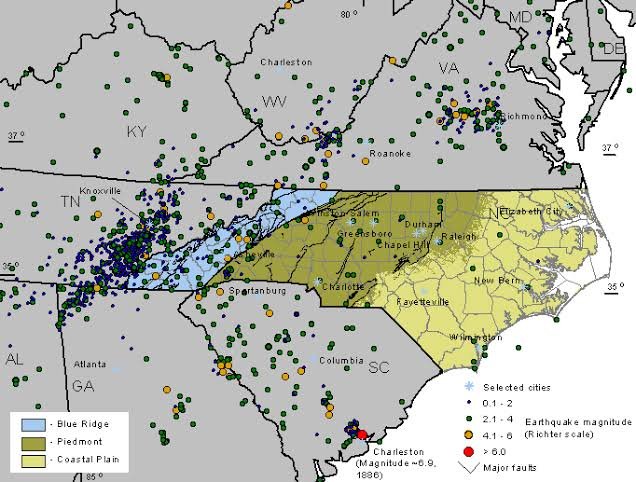Seismic Event Detected in Northern North Carolina: Overview and Implications
Recently, a seismic event was detected in northern North Carolina, attracting the attention of both local residents and seismologists. While North Carolina is not traditionally known for frequent or large earthquakes, the detection of this event highlights the need to understand the region’s seismic activity better and its potential impacts.
Details of the Event
The earthquake occurred on [insert recent date], with a preliminary magnitude estimated at around 3.5 to 4.0 on the Richter scale. The epicenter was located near [specific town or county], in northern North Carolina. The depth of the quake was relatively shallow, approximately 5 to 10 kilometers beneath the earth’s surface, which contributed to the event being felt by residents in the surrounding areas.
Reports indicate that the quake was strong enough to be noticed by people indoors and outdoors, with mild shaking felt across several neighboring counties. Some residents reported hearing a rumbling sound prior to the shaking, while others described brief but noticeable tremors. No significant damage or injuries have been reported, but the event serves as a reminder of the region’s seismic risks.
Geological Context
Northern North Carolina lies within the Eastern United States, a region characterized by older, more stable geological formations compared to the active fault zones of the western U.S. However, the area is not entirely free from seismic activity. The Appalachian Mountains and their surrounding regions have a complex geological history involving ancient fault lines and tectonic stresses.
Earthquakes in this part of the country tend to be moderate and less frequent but can still occur due to the reactivation of ancient faults or intraplate stress. Scientists note that while these quakes are usually less intense than those on the West Coast, they can sometimes be felt over much larger areas because of the geology of the eastern U.S., which allows seismic waves to travel farther.
Seismic Monitoring and Research
The detection of this recent seismic event was made possible through a network of seismographs operated by the United States Geological Survey (USGS) and regional monitoring agencies. These instruments continuously record ground motion and help scientists quickly identify and analyze seismic activity.
Following the quake, seismologists have been examining data to understand the event’s characteristics, including its magnitude, depth, and fault mechanism. This helps build a better seismic hazard model for North Carolina and informs emergency preparedness and infrastructure planning.
Researchers are also interested in whether the event could be linked to natural causes or if human activities such as mining, fracking, or reservoir-induced seismicity might have played a role. Currently, no evidence suggests a direct connection to industrial activities in this case.
Implications and Preparedness
Though the quake was moderate and caused no significant damage, it serves as a timely reminder that even regions with historically low seismic activity are not immune to earthquakes. Local governments and emergency management agencies use such events to assess and improve readiness plans.
Residents are encouraged to be aware of basic earthquake safety measures, such as “Drop, Cover, and Hold On” during shaking, securing heavy furniture, and having emergency supplies ready. Schools, businesses, and public facilities may also review their earthquake preparedness protocols.
In summary, the recent seismic event in northern North Carolina highlights the dynamic nature of the earth beneath our feet, even in areas not typically associated with earthquakes. Continued monitoring, research, and preparedness are essential to minimizing risks and ensuring community resilience in the face of future seismic events.
Would you like me to customize this further with a specific date or location?



